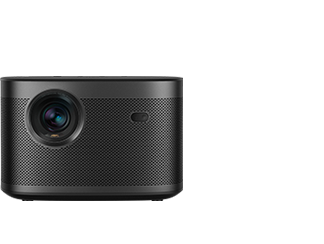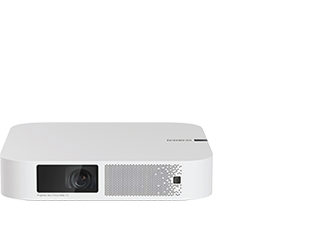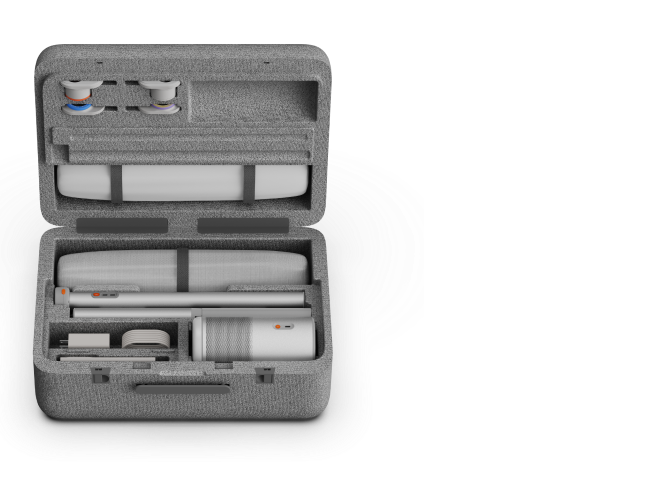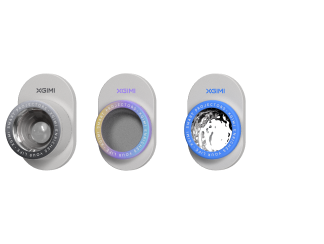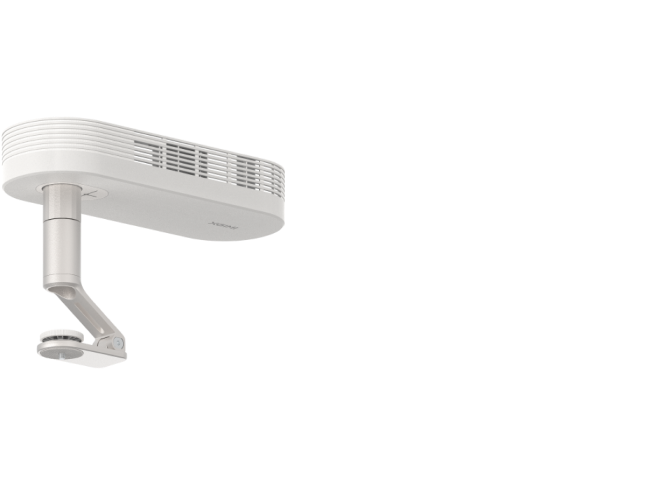Which Type of Light Source of a 4K Resolution Projector is the Best?
By XGIMI Tech - 2025-07
Choosing the correct 4K resolution projector becomes crucial as home entertainment advances. Let's start by discussing imaging before examining the three most common projection light sources available today: the lamp, LED, and laser, and determining which one could be ideal for your requirements.

How Many Types of Light Sources for 4K Resolution Projectors Are There?
There are three primary types of light sources for 4K resolution home projectors: lamps, LEDs, and lasers.
1. 4K Lamp Projector
This type uses a traditional high-pressure mercury or UHP (ultra-high performance) lamp as the light source.
Traditional projection lamps once had very short lifespans, often just a few hundred hours. Models with over 1000 hours of life only started appearing in the past decade. To boost brightness, many modern 4K projectors now use dual-lamp systems, though this also raises maintenance costs.
2. 4K LED Projector
4K LED projectors use LEDs (Light Emitting Diodes) as the light source instead of a traditional bulb.
As technology develops, the majority of LED-driven smart projectors produce impressive results nowadays. With high brightness output and an intelligent display chip, you can get appealing images with a 4K LED beamer. The LED light source is generally used in home movie projectors, portable video projectors, etc.
3. 4K Laser Projector
The laser projectors with 4K resolution use laser diodes to produce bright and focused beams of light for projection.
To be further classified, Laser light sources can be divided into triple laser, single laser, and others. It can reduce costs without compromising brightness, color saturation, or picture quality in big churches, theaters, schools, outdoor projection mapping displays, and other locations and applications that need large-format projection.

Comparing Projector Light Sources: Traditional Lamps vs. LED and Laser
When picking a 4K resolution video projector, one essential consideration is the kind of light source: conventional bulbs or solid-state options like LEDs and lasers. Each comes with its own perks and downsides based on your usage circumstances. Here’s a breakdown to help you decide:
1. Pros and Cons of Traditional Lamp-Based Projectors
Pros: Good Black Levels and Contrast in Dark Rooms, High Initial Brightness, and Lower Upfront Cost
● A well-designed 4K home theater projector with a conventional bulb can generally produce deeper black depths and more contrast than comparably priced solid-state versions. This results in more dramatic and visually attractive dark scenes.
● Some of them allow for high brightness output up to 3000 lumens or higher, which ensures clear and vivid images even in a well-lit environment.
● Lamp-based 4K projectors are often cheaper to acquire than their LED or laser counterparts. But the lamp bulb replacements can cost a lot in the long run.
Cons: Short Lifespan with Inconvenient and Expensive Bulb Replacement, Policy Restriction by EU RoHS
● Compared to LED and Laser light sources, the lamp bulb has a very short lifespan that only lasts for 1,500 to 2,000 hours. For decent bulb replacements, it can cost $100 or more every time.
● "Starting February 24, 2027, the European Union will ban the sale of projectors using mercury-based lamps. This regulation falls under the RoHS Directive, which seeks to limit hazardous substances in electronic devices."
2. Pros and Cons of the Solid-State Light Sources - LED and Laser
Common Pros: Longer Lifespan, Slower Brightness Loss, and Low Maintenance
● 4K projectors with LEDs or lasers often survive a lifespan of 20,000 to 30,000 hours for high-quality use, frequently outliving the projector itself.
● LED and laser solid-state light sources decrease brightness gradually and linearly, being able to sustain about 75% of their initial brightness for a significantly longer duration. In contrast, the traditional lights lose roughly 25% of their brightness within the first 500 hours, then continue to decline.
● With no bulbs to replace and slower brightness degradation, LED and laser 4K projectors are more stable and maintenance-free, especially appropriate for long-term users.
Cons of LED 4K Projector: Some models have Limited lighting output according to brands and techs.
Cons of Laser 4K Projector: They are usually highly priced.

Laser vs LED 4K Video Projector: Which is More Suitable for Your Needs?
4K LED projectors are known for their compact design, long lifespan, and energy efficiency, which converts over 80% of power into light while consuming less electricity. They produce vibrant colors and run quietly, making them ideal for home use.
Thanks to LED technology, they deliver vivid, accurate colors, making them perfect for home theaters or creative work. Their compact size and durable, vibration-resistant build also make them ideal for portable setups and smaller spaces. However, they usually offer lower brightness compared to laser models.
On the other hand,
Laser projectors of 4K resolution excel in brightness and image clarity, making them suitable for large screens in home theater or bright environments. They provide superior contrast and rich, dynamic colors, delivering an immersive viewing experience for both entertainment and professional use.
In short:
Choose LED for portability, energy savings, and color precision in smaller or darker rooms.
Choose a projector with 4K laser for brightness, contrast, and performance in brighter or larger spaces.
Does the Light Source Decide the Projector Image Quality?
The light source of a 4K projector is surely essential, but it is not the only one. While LED, laser, or lamp-based systems can affect brightness, color accuracy, and longevity, overall image quality depends on more than just the light source.
Other key elements include projector brightness output (lumens), which determines how well the image shows in different lighting environments, and color performance, which affects how vivid and accurate the visuals appear. Contrast ratio is also crucial for deep blacks and clear detail in dark scenes.
Additionally, technologies like HDR, Dolby Vision, and advanced image processing can greatly enhance the viewing experience, delivering sharper images, better color depth, and more dynamic visuals.
In short, while the light source sets the foundation, great image quality comes from the combination of hardware, brightness, color handling, and image-enhancing tech. Pay attention to the brightness performance and color accuracy that meet your demands when buying a 4K projector.
Projector Recommendations
Just Play, Your Way
Google TV Smart 1080p Projector On-the-Go

Mini Size,
Maximum Entertainment

Mini Remote Control
Enjoy 10€ off Your Next Purchase
Be the first to know about any news and sales!
*By subscribing, you agree to receive XGIMI's marketing emails and XGIMI's Privacy Policy.





